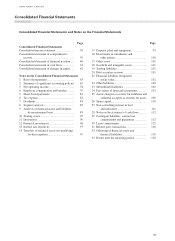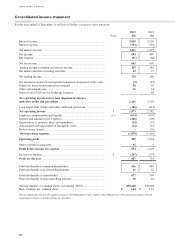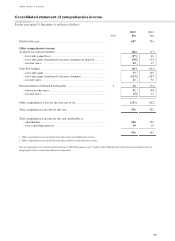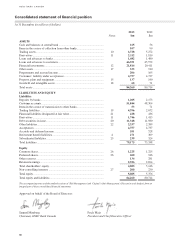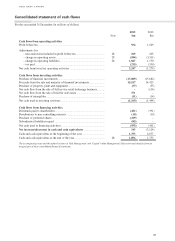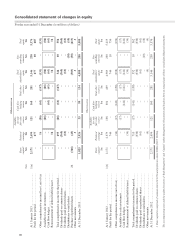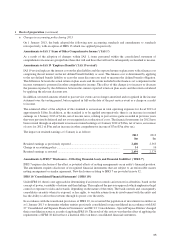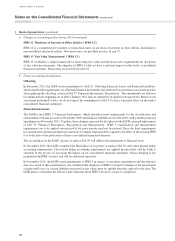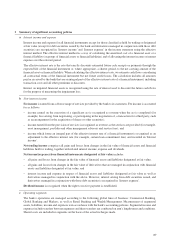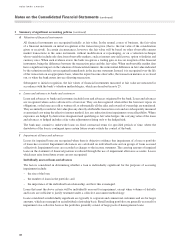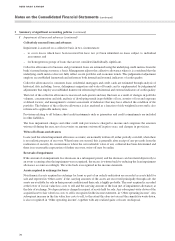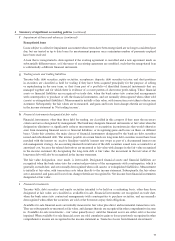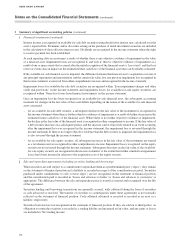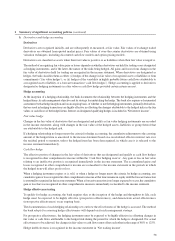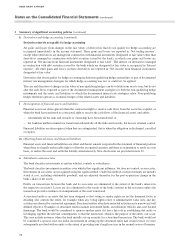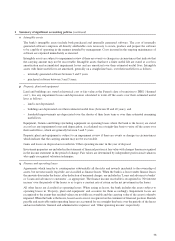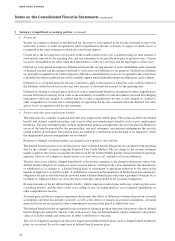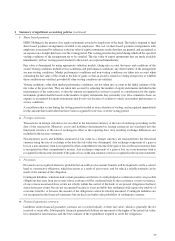HSBC 2013 Annual Report Download - page 69
Download and view the complete annual report
Please find page 69 of the 2013 HSBC annual report below. You can navigate through the pages in the report by either clicking on the pages listed below, or by using the keyword search tool below to find specific information within the annual report.
67
2 Summary of significant accounting policies
a Interest income and expense
Interest income and expense for all financial instruments except for those classified as held for trading or designated
at fair value (except for debt securities issued by the bank and derivatives managed in conjunction with those debt
securities) are recognized in ‘Interest income’ and ‘Interest expense’ in the income statement using the effective
interest method. The effective interest method is a way of calculating the amortized cost of a financial asset or a
financial liability (or groups of financial assets or financial liabilities) and of allocating the interest income or interest
expense over the relevant period.
The effective interest rate is the rate that exactly discounts estimated future cash receipts or payments through the
expected life of the financial instrument or, where appropriate, a shorter period, to the net carrying amount of the
financial asset or financial liability. When calculating the effective interest rate, we estimate cash flows considering
all contractual terms of the financial instrument but not future credit losses. The calculation includes all amounts
paid or received by the bank that are an integral part of the effective interest rate of a financial instrument, including
transaction costs and all other premiums or discounts.
Interest on impaired financial assets is recognized using the rate of interest used to discount the future cash flows
for the purpose of measuring the impairment loss.
b Non-interest income
Fee income is earned from a diverse range of services provided by the bank to its customers. Fee income is accounted
for as follows:
– income earned on the execution of a significant act is recognized as revenue when the act is completed (for
example, fees arising from negotiating, or participating in the negotiation of, a transaction for a third party, such
as an arrangement for the acquisition of shares or other securities);
– income earned from the provision of services is recognized as revenue as the services are provided (for example,
asset management, portfolio and other management advisory and service fees); and
– income which forms an integral part of the effective interest rate of a financial instrument is recognized as an
adjustment to the effective interest rate (for example, certain loan commitment fees) and recorded in ‘Interest
income’.
Net trading income comprises all gains and losses from changes in the fair value of financial assets and financial
liabilities held for trading, together with related interest income, expense and dividends.
Net income/(expense) from financial instruments designated at fair value includes:
– all gains and losses from changes in the fair value of financial assets and liabilities designated at fair value;
– all gains and losses from changes in the fair value of derivatives that are managed in conjunction with financial
assets and liabilities designated at fair value; and
– interest income and expense in respect of financial assets and liabilities designated at fair value as well as
derivatives managed in conjunction with the above. However, interest arising from debt securities issued, and
derivatives managed in conjunction with those debt securities is recognized in ‘Interest expense’.
Dividend income is recognized when the right to receive payment is established.
c Operating segments
The bank’s operations are managed according to the following global lines of business: Commercial Banking,
Global Banking and Markets, as well as Retail Banking and Wealth Management. Measurement of segmental
assets, liabilities, income and expenses is in accordance with the bank’s accounting policies. Segmental income and
expenses include transfers between segments and these transfers are conducted on arm’s length terms and conditions.
Shared costs are included in segments on the basis of the actual recharges made.


